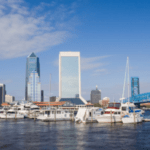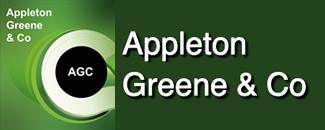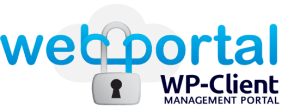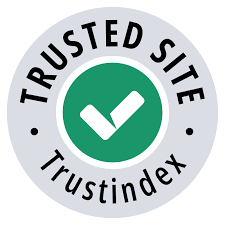Balancing Entrepreneurship
The Appleton Greene Corporate Training Program (CTP) for Balancing Entrepreneurship is provided by Mr. Meuchel BS Certified Learning Provider (CLP). Program Specifications: Monthly cost USD$2,500.00; Monthly Workshops 6 hours; Monthly Support 4 hours; Program Duration 20 months; Program orders subject to ongoing availability.


Personal Profile
Mr. Meuchel is a Certified Learning Provider (CLP) at Appleton Greene and he has experience in management and entrepreneurship specializing in the construction industry. He has achieved a Bachelor of Science in Civil Engineering with a concentration in Construction Management. He has industry experience within the following sectors: Business Ownership; Design/Build; Construction Management and General Contracting. His experience within the construction industry incorporates all facets of construction including: Design Phase; Bid Phase and Construction Phase. He has had commercial experience within the following countries: United States of America, or more specifically within the following cities: Baltimore MD; Washington DC; Raleigh NC; Jacksonville FL and Atlanta GA. His personal achievements include: established time management processes; published book for entrepreneurs; entrepreneur mastermind program and construction expert witness. His service skills incorporate: time management; process development & testing; marketing & sales; owner & 1 subcontractor relations; estimating & budgeting; planning & scheduling; cost & quality control; inspections & safety; municipal regulations and permitting.
To request further information about Mr. Meuchel through Appleton Greene, please Click Here.
(CLP) Programs
Appleton Greene corporate training programs are all process-driven. They are used as vehicles to implement tangible business processes within clients’ organizations, together with training, support and facilitation during the use of these processes. Corporate training programs are therefore implemented over a sustainable period of time, that is to say, between 1 year (incorporating 12 monthly workshops), and 4 years (incorporating 48 monthly workshops). Your program information guide will specify how long each program takes to complete. Each monthly workshop takes 6 hours to implement and can be undertaken either on the client’s premises, an Appleton Greene serviced office, or online via the internet. This enables clients to implement each part of their business process, before moving onto the next stage of the program and enables employees to plan their study time around their current work commitments. The result is far greater program benefit, over a more sustainable period of time and a significantly improved return on investment.
Appleton Greene uses standard and bespoke corporate training programs as vessels to transfer business process improvement knowledge into the heart of our clients’ organizations. Each individual program focuses upon the implementation of a specific business process, which enables clients to easily quantify their return on investment. There are hundreds of established Appleton Greene corporate training products now available to clients within customer services, e-business, finance, globalization, human resources, information technology, legal, management, marketing and production. It does not matter whether a client’s employees are located within one office, or an unlimited number of international offices, we can still bring them together to learn and implement specific business processes collectively. Our approach to global localization enables us to provide clients with a truly international service with that all important personal touch. Appleton Greene corporate training programs can be provided virtually or locally and they are all unique in that they individually focus upon a specific business function. All (CLP) programs are implemented over a sustainable period of time, usually between 1-4 years, incorporating 12-48 monthly workshops and professional support is consistently provided during this time by qualified learning providers and where appropriate, by Accredited Consultants.
Executive summary
Balancing Entrepreneurship
The need for Entrepreneurship Work-Life Balance
This program is ideal for an entrepreneur; someone who has gone beyond just coming up with ideas and has already had some success by turning those ideas into something tangible and making some money. Specifically, the program focuses on entrepreneurs ready to take their business to the next level while simultaneously creating a healthier work-life balance.
Mentorship and Guidance
Our ideal client has already been successful. Throughout the program the participants will receive ongoing mentorship to help them build on that success. The mentor will be there for guidance and will place emphasis on implementing strategies to work smarter instead of harder and to leverage strengths while compensating for weaknesses.
Mindset
Developing and maintaining a strong mindset is critical for entrepreneurs to compete at a pro-level in the short-term and sustain in the long-term. Under the tutelage of the program mentor, participants will take steps to strengthen their mindset by improving their clarity and confidence, while learning to differentiate what really matters and how to better prioritize their time.
Positioning
Throughout the program the entrepreneurs will take calculated actions to better align passion and expertise, in the process shedding or delegating the activities that threaten a healthy work-life balance. This repositioning is critical for participants to run a process driven business that works around their ideal lifestyle, not the other way around.
Results
Consistently focusing on results instead of information, together with proper positioning, enables entrepreneurs to enjoy making money while doing something they are good at; a goal most entrepreneurs set but few actually achieve. Program participants will work under the guidance of their mentor to implement and test result and process driven systems geared towards making their business run consistently and efficiently while leveraging one thing they cannot create more of; their time.
Adapt
Small business owners with limited resources often operate in fear instead of adapting to the constantly evolving economy. While working through the program participants will not only receive guidance to adapt their present operations for maximum output but also to forecast and adapt in the future for long-term sustainability.
Momentum
In entrepreneurship momentum is very difficult to attain but very easy to lose. Throughout the program entrepreneurs will learn how to capitalize on opportunities and effectively allocate resources to maximize momentum while minimizing burnout.
Sustainability
While working through the program participants will be guided through periodic assessments along the way. These assessments are designed to afford participants the opportunity to re-evaluate and make any necessary adjustments mid-stream to better position their businesses for long-term success and sustainability.
Balance
The ultimate success of each participant is predicated on their ability and discipline to follow the program, utilize the mentor and be coachable. In simplistic terms this means if participants are able to consistently work smarter, not harder, then they can achieve a healthy work-life balance while also making more money.

Methodology… How the program will satisfy those requirements
Through a series of result focused actionable steps under the mentorship and guidance of the program instructor each entrepreneur will dial in their mindset, perform market analysis, develop and test simplified systems and processes, then refine and optimize the systems and processes. The summation of these steps will result in the entrepreneur developing a process driven and efficient model tailored to work around their individual dreams and goals.
Assessment
Since you, the entrepreneur, have already had some success I have no doubt you are already an expert in your field and have built the foundation for your business. At the beginning of the program you will test that foundation by learning about yourself, analyzing your dreams, and setting your goals. The intent isn’t to rebuild your business from scratch but instead to work with the help of your consultant’s mentorship to build on and enhance what you’ve already created.
Blueprint
After completing your assessment phase you will be guided through a series of steps to build a custom framework specific to your business model; your blueprint. This blueprint will serve as the outline of actionable steps you will implement to optimize your current business model, keeping in line with the work-life balance goals you defined in the assessment stage. This is where you will begin laying out intentional steps so you can work smarter instead of harder and leverage your strengths while compensating for your weaknesses.
Foundation Reinforcement
During the assessment and blueprint phases you’ve worked within the confinements of the program and under the guidance of your mentor to pinpoint and solidify areas of your foundation to shore up and strengthen. Once the weaknesses in your foundation are identified you will learn how to reinforce and shore up your foundation which is critical for maximized and sustained success. The importance of this step is often underestimated or ignored in the rush to drive revenue, inevitably first leading to an unhealthy work-life balance followed by eventual burnout and failure.
Implementation
With your foundation solidified and customized blueprint outlining the next several months in hand the program starts to get fun. You will now begin implementing and putting your action plan in place. The key to this step is that you will test everything to gain valuable insights as to what is working and what is not working before investing time and money to develop repeatable processes and systems.
Optimization
During this phase of the program you will begin making adjustments and refinements using the insights provided by your testing data. You will continue to test during this phase and also begin developing and implementing systems and processes to help better position yourself for sustainable success; intentionally doubling down on your strengths and compensating for your weaknesses. This is another key step towards improving your work-life balance because once a repeating process is developed, implemented and tested it allows you to consistently work smarter instead of harder going forward.
Reassessment
At the beginning of the program you tested your foundation by learning about yourself, analyzing your dreams, and setting your goals; in the process developing a unique definition of success on your terms. The reassessment phase is when you, under the guidance of your mentor, take a step back and re-evaluate your long-term goals before going any further. This affords you the opportunity to identify and implement any adjustments to better position yourself to hit your own personal work-life balance sweet spot.
Adjustment
During the Adjustment phase you will be guided through steps to implement, test and optimize any adjustments to ensure success on your own terms; similar to the steps you already successfully completed during the Implementation Phase and Optimization Phase. With mindset, messaging, positioning, back ends, marketing and sales all working together in harmony you are getting close to the finish line.
Sustainability
Understanding that if you stand still as an entrepreneur, you are actually moving backwards, the Sustainability Phase is a critical component to achieve long-term success. During this phase you will be guided through development and implementation of checks and balances so you can continually test and adapt your business model to accommodate future industry and economic changes.
Long Term
If you stuck to your plan the summation of these steps will result in the development of a process driven and efficient model tailored to work around your individual dreams and goals. You have also positioned yourself to enjoy sustainable success on your own terms and achieved something most entrepreneurs will aspire to but never actually realize – Entrepreneurship Work-Life Balance.

Results… What will entrepreneurs achieve as a result?
The entrepreneurship cycle can be brutal at times; but it doesn’t have to be if proven steps are taken and applied directly to a business. This program will teach entrepreneurs when and how to take the steps, so they continually improve while strategically differentiating and separating from the competition. As participants work to take their business to the next level, the program and mentorship will streamline the typical entrepreneurship cycle and guide the entrepreneur through each step helping to avoid the normal pitfalls; resulting in a process driven business with a healthy work-life balance.
On day one the entrepreneurs will begin by analyzing their dreams and setting goals. Once solidified they will learn how to build and shore up your foundation which is critical for maximized and sustained success. The importance of this step is often underestimated in the rush to start generating quick revenue, inevitably leading to burnout and failure.
Once the foundation is stabilized participants will begin putting their customized plan in place and testing everything to identify what adjustments they need to make before optimizing. This is when the entrepreneur will start making adjustments and refinements, then optimizing to position themselves for sustained success.
With mindset, messaging, positioning, back ends, and sales all working in harmony, the entrepreneur is on their way to developing a process driven and efficient model tailored to work around their individual dreams and goals. By the end of the program the entrepreneur will position themself to enjoy success on their own terms and achieve something most entrepreneurs will aspire to but never actually achieve – Entrepreneurship Work-Life Balance.
Curriculum
Balancing Entrepreneurship – Part 1 – Year 1
- Part 1 Month 1 Goal Establishment
- Part 1 Month 2 Baseline Assessment
- Part 1 Month 3 Feasibility Analysis
- Part 1 Month 4 Priority Identification
- Part 1 Month 5 All-Star Identification
- Part 1 Month 6 Mindset
- Part 1 Month 7 Blueprint Development
- Part 1 Month 8 Foundation Reinforcement
- Part 1 Month 9 Resource Commitment
- Part 1 Month 10 Resource Allocation
- Part 1 Month 11 Implementation
- Part 1 Month 12 Testing
Balancing Entrepreneurship – Part 2 – Year 2
- Part 2 Month 1 Reassessment
- Part 2 Month 2 Adjustment Prioritization
- Part 2 Month 3 Optimization
- Part 2 Month 4 Goal Review
- Part 2 Month 5 Long-Term Commitment
- Part 2 Month 6 Systems Redundancy
- Part 2 Month 7 Adaptation Controls
- Part 2 Month 8 Long-Term Planning
Program Objectives
The following list represents the Key Program Objectives (KPO) for the Appleton Greene Balancing Entrepreneurship corporate training program.
Balancing Entrepreneurship – Part 1- Year 1
- Part 1 Month 1 Goal Establishment – During the first phase of the program you will be guided through a series of steps designed to help you establish your own unique goals and determine what you plan to accomplish during the program. At the conclusion of this phase you will have established your own personal goals, validated these goals and put them down on paper. These validated goals will now serve as a key ingredient for developing your customized blueprint and help guide you through the remaining steps of the program. In simplistic terms this means establishing goals is your first step towards reverse engineering your own success and enabling you to focus on results through every step of the program. You will first be guided through a gut level assessment called the Ten-Second Test, to help you set the baseline needed for your own testing and validation. Next you will work through the Ten-Minute Dream Statement which is where you will begin expanding on your gut level assessment. Next you will begin to test and validate your goals through a deep, critical thinking step called the Ten-Hour Reflection. During the final step in this phase, you will establish your own unique goals and determine exactly what you plan to accomplish during the program. Your program mentor will help you interpret the results of your test, statement and reflection and turn these results into tangible and realistic goals geared towards improving your business and achieving a healthy work-life balance. You in turn will validate these goals and put them down on paper before moving to the next program phase.
- Part 1 Month 2 Baseline Assessment – The driving purpose of the Baseline Assessment Phase is to determine the present state of your business and to understand how your current work-life balance aligns with where you really want to be. After you are guided through the steps of the assessment you will learn how to analyze this data in conjunction with the validated goals and expectations you developed in the first phase. This analysis will then allow you, under the guidance of your mentor, to make informed decisions as you move into the final stages of process planning and start process development. The assessment phase will kick off with a focus on your mindset and expertise. During the mindset portion and under the tutelage of your mentor you will test yourself, specifically your confidence and clarity, to make sure you are completely clear where you want to be and are committed to working through the program to get there. You will continue to work closely with your mentor assessing your expertise as well. This is a critical step in self-awareness, not only to confirm your expertise but also to better understand how you are perceived by your customers, employees, and peers in relation to competition, credentials, social proof, etc. After tackling mindset and expertise, you will be guided through a detailed analysis of the nuts and bolts of your business and conduct a thorough review of the current systems and processes you have in place for both the front ends and the back ends. Next you will review your current unique value proposition and analyze how it positions you in the marketplace. During this portion you will also look at the tasks you are handling directly which is the first step towards identifying areas to delegate and identifying repeatable tasks you can create systems and processes for. Finally, at the end of the Baseline Assessment Phase you will review your current support network and the role this network is playing in your current approach to business and work-life balance. This network will be slightly different for each program participant but generally include a mix of immediate family and circle of influence, mentors, coaches, mastermind and networking groups, professional trade organizations and key outsource partners.
- Part 1 Month 3 Feasibility Analysis – In the first program phase you established program goals and objectives. Then, during the second phase you performed an assessment focused on setting a baseline to identify the current state of your business and personal life. The purpose of the Feasibility Analysis Phase is to take the results of the first two phases and confirm you are ready to make it happen, to begin identifying any foreseen obstacles and roadblocks you will face, and to look for opportunities. After completing this phase, you will be in a position to begin better leveraging your time and establish priorities. Now that you have realistic goals in place and a sense of the current state of your business it is during this phase that you will start working closely with your mentor to start identifying ways you can make better time management a reality. A key component of creating a healthier work-life balance will be to better leverage your own time while making your actions more intentional and less random. During this phase you will begin market analysis with a focus on identifying any underserved niches in your target market that align with your expertise and vision. Identifying a niche you can leverage at this stage makes your path to success exponentially easier. The preliminary market research you conduct in this phase will also help you in subsequent stages when you begin to test your market. Also during this phase, you will take steps to evaluate the money, risk, earning potential, time frames, legal requirements, available resources, etc. Getting a real handle on these areas of your business now will help streamline the upcoming Priority Identification Phase and All-Star Identification Phase.
- Part 1 Month 4 Priority Identification – The objective of the Priority Identification Phase of the program is to continue building on your work from the first three phases. By this juncture you have already established your goals and begun planning with those goals in mind. You have also evaluated the present state of both your business and your personal life in relation to your desired work-life balance and analyzed the feasibility that you are willing to do what it takes to make it happen. During this planning phase you will be guided through steps to analyze the data you have amassed and begin prioritizing the development, implementation, and testing. Again your mentor will be a valuable resource during this phase, providing guidance to help you prioritize your time and resources; critical in your quest to capitalize on opportunities and effectively allocate resources to maximize momentum while minimizing burnout. At this point in the program the curriculum and mentor will be focused on providing guidance to place emphasis on implementing strategies to work smarter instead of harder and to leverage strengths while compensating for weaknesses. Following the program, utilizing the mentor, and being coachable are all critical to the ultimate success of each participant. So, in simplistic terms, if you are able to consistently work smarter, not harder, then you can achieve a healthy work-life balance while also making more money. Once your priorities are identified and the steps are taken to rank and categorize these priorities into the proper order you will be ready to move into the next phase and start identifying your All-Star in-house and outsource partners.
- Part 1 Month 5 All-Star Identification – Similar to the planning phases you have completed already, the final phase in the Process Planning Stage will continue to build on what you have already accomplished thus far in the program. In the last phase you worked closely with your mentor to prioritize your future development, implementation, and testing of processes and systems; specifically focusing on taking your business to the next level while improving on your work-life balance. The objective of the All-Star Identification Phase is to place emphasis on taking calculated actions to better align passion and expertise; in the process, planning the shedding or delegating the activities that are a threat to your healthy work-life balance. Planning this repositioning and leveraging of available resources will be critical to run a process driven business that works around your ideal lifestyle, not the other way around. During this phase you will use newly identified priorities from the previous phase as the framework while you are guided through additional steps to help you begin to identify and plan how best to utilize in-house staff and outsource partners to better leverage your time and resources. This is a precursor for the steps you will take in the future program phases to shed your load and also streamline the creation of tested, repeatable systems and processes. At the conclusion of this phase you will have successfully completed each phase of the Process Planning Stage and be ready to move into the second stage of the program, the Process Development Stage.
- Part 1 Month 6 Mindset – As you shift from the Process Planning Stage into the Process Development Stage the first step will be to focus more heavily on mindset. At this point you already addressed your mindset at a planning level during the Baseline Assessment Phase and spent some valuable time with your mentor making sure you were completely clear about where you want to be and are committed to working through the program to get there. Now that you have completed the remaining phases of the Process Planning Stage you will be in a much better position to scrutinize and test your own confidence and clarity. This is a critical step because as you work through each stage and phase of the program you will learn more about your strengths and your weaknesses while simultaneously continuing to fine-tune your goals and dreams. The program curriculum anticipates and allows for your increased clarity and affords you the ability to make streamline adjustments along the way without completely starting over. The Mindset Phase will kick off with more enhanced versions of the Ten-Second Test, Ten-Minute Dream Statement, and Ten-Hour Reflection than the activities you completed to establish your initial goals in the first phase of the program. At the program outset you were tasked with committing to doing what it takes but at this stage you will test everything you put together during the process planning stage of the program. This testing and analysis will place emphasis on validating your confidence and clarity under the oversight of your mentor, who will again be there to help guide you through each step. At the conclusion of this phase you will be ready to start developing your customized blueprint which will outline the remaining program steps.
- Part 1 Month 7 Blueprint Development – The custom blueprint you will develop during the Blueprint Development Phase of the program will culminate the work you put forth in the Process Planning Stage and validated during the Mindset Phase. During this phase you will be guided through a series of steps designed to assist in the development and building of a custom framework specific to your business model and goals, called your Success Blueprint. The first part of blueprint development will focus on identifying the steps to reinforce your existing foundation. Guided by the program resources and your mentor this reinforcement will be custom to your business model and take into account your findings from the baseline assessment, feasibility analysis, priority identification and all-star identification steps you’ve already completed. In order to achieve program success and build a sustainable business model this reinforcement will be completed prior to kicking off the implementation and testing stages of the program. During the second part of this phase you will be guided through a process to help you identify the critical steps to commit and allocate resources during the implementation and testing stages of the program. Next, the third part of the phase will focus on outlining the implementation stage. Lastly, the fourth and final part of the phase will focus on process testing and preparations for a long-term sustainable model after program completion. Once built, your Success Blueprint will serve as the outline of actionable steps to develop, reverse engineer, and ultimately achieve the program goals you set. The blueprint will also provide for regular check-ins throughout the program curriculum as you continue to learn and improve your clarity; so that you have the opportunity to make streamline adjustments along the way without completely starting over.
- Part 1 Month 8 Foundation Reinforcement – During Process Planning when you completed the Baseline Assessment Phase you analyzed the present state of your business and how your current work-life balance aligns with where you really want to be. Following that work you reviewed the feasibility of your goals, outlined your specific priorities, and began to identify all-star employees, outsource partners, and resources. With that data in hand and a clear blueprint now in place, the next phase of the program is designed to guide you through the steps of reinforcing your existing business foundation. To streamline efforts this work will be performed with an eye on the target; your program goals, future sustainability, and a healthier work-life balance. As you work through this phase you will begin to further develop and reinforce the current systems and processes you have in place for both the front ends and the back ends of your business. Depending on your earlier analysis you might also be receiving guidance to help you ramp up some of these processes and ramp others down. The next step will be to reinforce your current positioning in the marketplace. You will start making the initial adjustments to your unique value proposition to better focus on any underserved niches you identified in your target market that align with your expertise and vision. This is also the point in the program when you will begin the calculated delegation process of shedding the load to better leverage your time. As you continue to work through this phase you will also work towards reinforcing the areas of your business that need shoring up in relation to money, risk, earning potential, time frames, legal requirements, available resources, etc. The final step in the Foundation Reinforcement Phase is perhaps the most important. During this portion of the phase you will take the first steps towards upgrading your current support network and clarifying the role this network will play in your future approach to business and work-life balance. This network will be slightly different for each program participant but generally include a mix of immediate family and circle of influence, mentors, coaches, mastermind and networking groups, professional trade organizations and key outsource partners.
- Part 1 Month 9 Resource Commitment – The Resource Commitment Phase of the program will be divided into two distinct parts. The first portion will be geared towards developing and committing your own personal resources; your time. It is critical this portion precedes the second part to make sure you have confidence and good clarity of how you will fit into the business model going forward at this point. Then and only then will it be appropriate to seek commitment from and allocate any additional resources to your business and personal life. After personally committing you will move into the second part of this phase when you will begin to develop your network of resources. By this juncture in the program this network will more than likely now be composed from a mix of previous and new mentors, coaches, mastermind and networking groups, professional trade organizations, and key outsource partners. It is during this second part of the Resource Commitment Phase that you will work under the tutelage of your mentor, program curriculum resources and your Success Blueprint to begin reaching out to your network. The first step of this reach out process will be the development of what your intended roles and responsibilities for each outsource partner will entail. Taking the time to put together a clear and concise description will minimize any future confusion and missteps. Once the intended roles are defined you will be guided through the steps to develop and test the resources of priorities and all-star team you identified during the Process Planning Stage; ultimately with the intent of securing commitments.
- Part 1 Month 10 Resource Allocation – After committing your own personal resources and securing commitments from key all-star team partners during the last phase you are almost ready to move into the Process Implementation Stage. But before you jump ahead, the last step in the Process Development Stage of the program will be to allocate and prioritize the implementation of your now committed resources. This includes allocating your own time as well as the time of any key employees and all-star outsource partners you intend to leverage moving forward. Your mentor will be right there with you to assist during this critical phase where it will be of utmost importance to once again test your mindset, review priorities, and confirm that the resource allocation is consistent with your program goals; keeping in mind the healthier work-life balance you are working towards. Again, keeping in line with the program you will have the opportunity to make any adjustment here prior to the start of implementation. During this phase all of the hard work you invested through the first modules of the program will come together and the allocated resources will be incorporated into your Success Blueprint. Upon completion of the phase you will have taken the steps not only to add the resources to the blueprint but also to retest the commitment one last time before starting to implement. At the conclusion of this phase you will have successfully completed each phase of the Process Development Stage and be ready to move into the third stage of the program, the Process Implementation Stage.
- Part 1 Month 11 Implementation – When you reach the Implementation Phase you will transition out of the Process Development Stage and into the Process Implementation Stage of the program. This phase marks the juncture in the program when you will begin to utilize your resources and implement what you have planned and developed. At the beginning of the phase you will be guided through steps to prioritize the implementation of your own personal resources as well as the resources of key all-star team partners you allocated. With the help of your mentor and your Success Blueprint, this implementation will be a controlled effort with emphasis phased on transforming your business model while also incorporating a healthier work-life balance right from the start. As soon as the implementation starts real data will be generated and can be analyzed, making this stage critical in your quest to achieve your program goals. It is this real data, together with the planning and development work you have already completed, that will position you to best leverage your resources as you work towards optimizing systems and processes. As the data is generated you will receive guidance on how to capture this data so you will be in position to use it for testing, adjustment, and optimization during the remaining phases of Process Implementation. Until reaching this point in the program your tasks have been very head to tail in the sense that each activity and phase followed the successful completion of another. Although your progression will continue and you will move from this phase into a testing one, the implementation will continue as well, overlapping testing as your controlled allocation of resources and implementation continues. This overlapping of phases and resources will mirror the way your business will run moving forward when you will continue to assess, implement, test, and optimize for long-term sustainability. Developing a business model to run fluidly and consistently, like a well-oiled machine, is a key component of a healthy work-life balance.
- Part 1 Month 12 Testing – During the Testing Phase you will continue the phased implementation of resources but will now have generated enough real data to begin building data collecting systems and processes to continually analyze the information. Once built and implemented, these testing processes will enable you to always have a handle on what is working and what is not working in your business; both during this program and also going forward. The testing data will also allow you to make informed decisions based on fact instead of guessing and being forced to make gut-level and emotional decisions. At the beginning of this phase you will be guided through steps to build and test the systems you will rely on to harvest data. The key to this step is that you will test everything to gain valuable insights as to what is working and what is not working before investing time and money to develop processes and systems. Once the systems are built and tested you will take additional steps to turn the systems into repeatable and automated processes where possible. You will then spend the rest of the Testing Phase working under the guidance of your mentor to make preliminary reads of the data and customize it into formats best suited for producing the information you need to make good decisions about your business. With implementation well under way and testing continuing, by the completion of this phase you will be ready to reassess each resource during the next phase so you can make any necessary adjustments prior to building optimized systems and processes.
Balancing Entrepreneurship – Part 2- Year 2
- Part 2 Month 1 Reassessment – At the beginning of the program you tested your foundation by learning about yourself, analyzing your dreams, and setting your goals; in the process developing a unique definition of success on your terms. Now that you have worked through the planning and development stages and begun to implement it is important to once again test your current foundation and state of mind. That is why during the first part of the Reassessment Phase you will, under the guidance of your mentor, again test your mindset. The main purpose at this juncture of the program is to check in on your confidence and to confirm clarity of your long-term goals before investing in more resources and going any further. After your mindset check is complete and any necessary adjustments are added to your Success Blueprint you will spend the second part of the Reassessment Phase checking in on messaging, positioning, front ends, back ends, marketing, sales, and your support network. By this point each of these areas will have gone through an implementation and testing phase and can generate real, actual data. It is critical at this time to harvest and analyze this data before making any concerted effort to optimize specific resources based on assumptions alone. By the completion of this phase the assessment level and analysis work you have completed will prepare you for the next phase where each necessary resource adjustment will be categorized and prioritized in preparation for doubling down on strengths and compensating for weaknesses during the Optimization Phase.
- Part 2 Month 2 Adjustment Prioritization – During the Adjustment Prioritization Phase you will be guided through a series of steps to implement, test and optimize any adjustments to ensure success on your own terms; similar to the steps you already successfully completed during the earlier phases. The final step prior to optimizing systems and processes will be to categorize and prioritize the resource adjustment list you generated during the prior phase. The main focus of this phase will be to expand on and prioritize the resource adjustment list generated during the assessment. This preparation work will position you to maximize resources while focusing on your strengths and compensating for your weaknesses during the upcoming Optimization Phase. The phase will begin under the tutelage of your mentor as you are guided through steps focused on revisiting and validating each identified potential resource adjustment prior to investing in any valuable resources to develop and implement the adjustment. Each validated adjustment will then be added to your Success Blueprint in the prioritized sequence most beneficial to achieving your program goals and objectives. At the conclusion of this phase your updated Success Blueprint will incorporate any planned adjustments to optimize mindset, messaging, positioning, front ends, back ends, marketing, sales, and your support network. You will be getting close to the finish line and soon these areas will all be working together in harmony as you prepare to move into the final phase of the Process Implementation Stage where systems and processes designed to optimize your business while creating a healthier work-life balance are developed, implemented, and tested.
- Part 2 Month 3 Optimization – When you successfully completed the Process Development Stage you allocated and prioritized the implementation of your own personal resources as well as the resources of key all-star team partners. You then spent the first four phases of the Process Implementation Stage continuing to follow your Success Blueprint and progressing towards your goals under the guidance of your mentor and the program curriculum. It was during these phases that you implemented the resources and tested every step of the way allowing you to capture critical data. You then utilized this data to reassess the performance of each resource and began to develop a plan for how best to adapt each resource further towards optimal. During this phase of the program you will begin implementing these adjustments and refinements to optimize those resources using the insights provided by your testing data. You will continue to test during this phase and also begin developing and implementing systems and processes to help better position yourself for sustainable success; intentionally doubling down on your strengths and compensating for your weaknesses. The systems and processes you optimize during this phase make another key step towards improving your work-life balance because once a repeating process is developed, implemented and tested it allows you to consistently work smarter instead of harder going forward. At the conclusion of this phase you will have successfully completed each phase of the Process Implementation Stage and be ready to move into the fourth and final stage of the program, the Process Review Stage.
- Part 2 Month 4 Goal Review – During the first phase of the program you established your own unique goals and determined what you planned to accomplish during the program. After establishing your goals, you validated them and put them down on paper. This was your first step towards reverse engineering your own success and enabling you to focus on results through every step of the program. After establishing your baseline you were guided through steps at strategic times throughout the program to re-evaluate and further develop these goals. As you learned more about yourself and your business you also had the opportunity to make any necessary streamline adjustments along the way. The purpose of kicking off the Process Review Stage of the program with the Goal Review Phase is so you can perform one last strategic re-evaluation of everything that you set forth to accomplish and rate your progress towards successfully attaining these goals. Also, during this phase you get one last chance to make any adjustments before taking the final steps to continue developing and leveraging the now optimized systems and processes. Similar to your earlier evaluations you will once again be guided through modified versions of the Ten-Second Test, the Ten-Minute Dream Statement, and the Ten-Hour Reflection. After working through the exercises your program mentor will help you interpret the results of your test, statement, and reflection to help you confirm the actions you have taken focused on improving your business while also achieving a healthy work-life balance. After confirming your goal achievement and planning are in alignment you will be ready to move into the next phase, called Long-Term Commitment.
- Part 2 Month 5 Long-Term Commitment – After reviewing your goals, the next program phase is called Long-Term Commitment. During this phase you will be guided through a series of steps very similar to those you completed during the Process Development, Resource Commitment Phase. The phase will be divided into two distinct parts. The first portion will be geared towards reviewing and committing your own personal resources; your time for the long-term. It is critical this portion precedes the second part to make sure you have confidence and good clarity of how you will fit into the business model going forward at this point. Then and only then will it be appropriate to confirm long-term commitment from and allocate any additional resources to your business and personal life. After personally committing you will move into the second part of this phase when you will begin to review your network of resources. At this juncture in the program this network will now more than likely be composed from a mix of mentors, coaches, mastermind and networking groups, professional trade organizations, and key outsource partners. It is during this second part of the Long-Term Commitment Phase that you will work under the tutelage of your mentor, program curriculum resources, and your Success Blueprint to again reach out to your network. The first step of this reach out process will be to confirm each all-star understands what your long-term intended roles and responsibilities will entail. Taking the time to put together a clear and concise description and to clarify any questions will minimize any future confusion and missteps.
- Part 2 Month 6 Systems Redundancy – Once your intended long-term role and that of your all-star team are confirmed you will move into the Systems Redundancy Phase. The purpose of this phase will be to complete a series of guided steps to review the processes and systems you have optimized and are now utilized regularly by your business. Also, you will establish long-term redundancies to ensure your systems will remain current and the data you are reviewing and relying on will be accurate. Your review during this phase will start with a baseline assessment of each resource and then a comparison of this assessment against your long-term goals. After successfully completing this assessment you will review the feasibility of each resource’s success against long-term economic and industry projections and forecasts. Next, you will review your process and system testing to make sure proper redundancies have been built into the data collection, testing, and analysis because you will be relying heavily on this information to make future business decisions. Following this, the second to last step in the Systems Redundancy Phase will be to correct any deficiencies you discover and to make any necessary adjustments to the systems already in place. The last step in this phase will be to allocate and schedule a series of future systems check-ins and internal audits to ensure the reporting data is accurate and continues to provide key performance indicators consistent with any industry changes over time. Upon successful completion of this phase you will move into the Adaptation Controls Phase of the program.
- Part 2 Month 7 Adaptation Controls – When you began this program you started by establishing goals and objectives designed to take your business to the next level while simultaneously creating a healthy work-life balance. Then, at specified intervals during the program you worked towards achieving greater clarity, allowing you to further develop these goals and objectives. After planning, developing, and implementing systems and processes to make these goals reality you moved into the Process Review Stage of the program to again assess the goals, commit for the long-term, and confirm redundancy of the now optimized systems and processes. At this juncture of the process the program focus has shifted slightly as you work towards maintaining and sustaining the momentum you have worked so hard to acquire. Recognizing that every industry has to go through changes and adaptations to survive, you will be guided through steps to prepare your business to recognize and be in a position to adapt as needed. During the Adaptation Controls Phase you will be guided through steps to implement a series of checks and balances designed to help your business adapt to future changes to your business and industry as well as any personal changes you will experience down the road. With your commitment in place and a process to recognize and adapt to unforeseen changes you are almost to the finish line with your process driven business designed to thrive and the present and adapt so it can sustain in the future. Once you have successfully established your adaptation controls you will move into the final phase of the program to complete your long-term planning.
- Part 2 Month 8 Long-Term Planning – During the program you identified a series of goals and objectives to achieve success on your terms. If you stuck to your plan the summation of these steps will result in the development of a process driven and efficient model tailored to work around your individual dreams and goals. You also positioned yourself to enjoy sustainable success on your own terms and achieved something most entrepreneurs will aspire to but never actually realize – Entrepreneurship Work-Life Balance. By design, you will have already completed much of your long-term planning at a precursory level before reaching this juncture in the program. Yet, because statistics prove that writing goals down and developing an action plan is essential to success, putting your plan down on paper will be the main objective for this final phase. At the outset of this phase you will be guided through steps to identify and validate your long-term goals. Working through the curriculum and under the tutelage of your mentor you will work through steps to quantify and prioritize your future goals and to write them down. Next, you will be led through steps to develop a future action plan which includes suggested check-ins at regular calculated intervals. When your action plan is developed you will again test and validate your plan to ensure it is consistent with your intended work-life balance, making any final adjustments at this point. Once your plan is validated you will be guided through the final exercise of the program during which you will build your customized Future Success Blueprint.
Methodology
Balancing Entrepreneurship
Program Planning
The methodology behind the Process Planning Stage of the program is designed to first help you establish your own unique goals and determine what you plan to accomplish during the program. After establishing your own personal goals, validating these goals, and putting them down on paper you will begin taking the necessary steps to begin planning the transformation of your business to better align with these goals and create a healthier work-life balance.
The reason the program begins with establishing and validating your own personal goals is that these goals will serve as a key ingredient for developing your customized blueprint and help guide you through the remaining steps of the program. In simplistic terms this means establishing goals is your first step towards reverse engineering your own success and enabling you to focus on results through every step of the program.
After establishing program goals you will establish a baseline by determining the present state of your business and evaluating how your current work-life balance aligns with where you really want to be. This baseline in conjunction with your program goals and expectations will then allow you, under the guidance of your mentor, to make informed decisions as you move into the final phases of process planning and into process development.
First, you will assess your current mindset and expertise level before performing a detailed analysis of the nuts and bolts of your business. This will include a thorough review of the current systems and processes you have in place for both the front ends and the back ends.
Following the review, your next step will be to assess your current unique value proposition and analyze how it relates to your newly established goals and current work-life balance. You will also look at the tasks you are handling directly which is the first step towards identifying areas to delegate and to target for developing systems and processes.
Next, you will assess your current support network and the role this network is playing in your current approach to business as well as any positive and negative effects this network is having on your work-life balance. This leads into the last part of your assessment which will include a market analysis and review of your current money, risk, earning potential, time frames, legal requirements, available resources, etc. Getting a real handle on these areas of your business now will help streamline the final phases of Process Planning.
The final portions of the Process Planning Stage are designed to help you identify priorities and to begin planning the calculated actions you will take to better align passion and expertise, and the shedding or delegating of the activities that are a threat to your healthy work-life balance. This is a precursor for the steps you will take in the future program process improvement stages when you develop, implement, and review.

Program Development
The methodology behind the Process Development Stage of the program is designed to develop the goals and objectives you planned during the first stage of the program and to make the final preparations for a successful implementation.
By this point in the program you will be in a much better position to scrutinize and test your own confidence and clarity. Kicking off the developmental phase with another mindset review is a critical step because as you work through each stage and phase of the program you will learn more about your strengths and your weaknesses while simultaneously continuing to fine-tune your goals and dreams.
After testing your mindset to validate the work you put forth during the planning phases you will be ready to begin development and building of a custom framework specific to your business model and goals. This framework will be your Success Blueprint. Once built, your Success Blueprint will serve as the outline of actionable steps to develop, reverse engineer, and ultimately achieve the program goals you set. The blueprint will also provide for regular check-ins throughout the program curriculum as you continue to learn and improve your clarity; so that you have the opportunity to make streamline adjustments along the way without completely starting over.
With a clear blueprint now in place, the next phase of the program development is designed to guide you through the steps of reinforcing your existing business foundation. It is at this stage of the program that you will begin to further develop and reinforce the current systems and processes you have in place for both the front ends and the back ends of your business. This will be followed by reinforcing your positioning in the marketplace.
Next, you will start making the initial adjustments to your unique value proposition to better focus on any underserved niches you identified in your target market that align with your expertise and vision. You will also simultaneously begin the calculated delegation process of shedding the load to better leverage your time and begin working on reinforcing the areas of your business that need shoring up in relation to money, risk, earning potential, time frames, legal requirements, available resources, etc.
Before committing and allocating additional resources you will first begin to upgrade your current support network and clarify the role this network will play in your future approach to business and work-life balance. This network will be slightly different for each program participant but generally include a mix of immediate family and circle of influence, mentors, coaches, mastermind and networking groups, professional trade organizations and key outsource partners.
The final steps in the Process Development Stage of the program will be to commit, allocate and prioritize the implementation of your own time as well as the time of any key employees and all-star outsource partners you intend to leverage moving forward; and to add them to your Success Blueprint.

Program Implementation
The methodology behind the Process Implementation Stage of the program is designed to begin a phased implementation, testing, and optimizing of systems and processes focused on meeting your program goals and objectives.
During this stage of the program you will start the prioritized implementation of your own personal resources as well as the resources of key all-star team partners you allocated. With the help of your mentor and your Success Blueprint as a roadmap, this implementation will be a controlled effort with emphasis phased on transforming your business model while also incorporating a healthier work-life balance right from the start.
As soon as the implementation starts real data will be generated and can be analyzed, making this stage critical in your quest to achieve your program goals. It is this real data, together with the planning and development work you have already completed, that will position you to best leverage your resources as you work towards optimizing systems and processes. As the data is generated you will receive guidance on how to capture this data so you will be in position to use it for testing, adjustment, and optimization during the remaining phases of Process Implementation.
Until reaching this point in the program your tasks have been very head to tail in the sense that each activity and phase followed the successful completion of another. Although your progression will continue and you will move from this phase into a Testing Phase, the Implementation Phase will continue as well, overlapping testing as your controlled allocation of resources and implementation continues.
This overlapping of phases and resources will mirror the way your business will run moving forward when you will continue to assess, implement, test, and optimize for long-term sustainability. Developing a business model built to run fluidly and consistently, like a well-oiled machine, is a key component of a healthy work-life balance.
The systems and processes you optimize during this phase mark another key step towards improving your work-life balance because once a repeating process is developed, implemented, and tested it allows you to consistently work smarter instead of harder going forward. At the conclusion of this phase you will have successfully completed each phase of the Process Implementation Stage and be ready to move into the fourth and final stage of the program, the Process Review Stage.

Program Review
The methodology behind the Process Review Stage of the program is designed to help you confirm that you have accomplished your program goals and to make sure proper steps have been taken for future success and sustainability.
This stage of the program will start with a strategic re-evaluation of everything that you set forth to accomplish and rate your progress towards successfully attaining these goals; completing modified versions of the Ten-Second Test, the Ten-Minute Dream Statement, and the Ten-Hour Reflection. These results will provide you the opportunity to make any necessary adjustments before taking the final steps to continue developing and leveraging your optimized systems and processes.
As you continue through the review stage you next will spend time reviewing and reconfirming that you have confidence and good clarity of how you will fit into the business model going forward. Then and only then will it be appropriate to confirm long-term commitment from, and allocate, any additional resources to your business and personal life. This will be followed by a review to confirm each all-star understands what your long-term intended roles and responsibilities will entail. The purpose of this review is to clarify any questions so you can minimize any future confusion and missteps.
Next, you will complete a series of guided steps to review the processes and systems you have optimized and are now utilized regularly by your business. Also, you will establish long-term redundancies to ensure your systems will remain current and the data you are reviewing and relying on will be accurate. The last part of this review will be to check the feasibility of each resource’s success against long-term economic and industry projections and forecasts.
With feasibility confirmed you will review your process and system testing to make sure proper redundancies have been built into the data collection, testing and analysis because you will be relying heavily on this information to make future business decisions. This will be followed by taking any interim measures to correct any deficiencies you discover and to make any necessary adjustments to the systems already in place. You will then allocate and schedule a series of future systems check-ins and internal audits to ensure the reporting data is accurate and continues to provide key performance indicators consistent with any industry changes over time.
The last step in the Process Review Stage of the program will be to build your customized Future Success Blueprint for continued use after the program. This blueprint will quantify and prioritize your future goals and will include suggested check-ins at regular calculated intervals.
At the completion of the Process Review Stage of the program you will have reviewed and validated what you have built during the program and also planned for the future; the last step in developing a process driven and efficient business model tailored to work around their individual dreams and goals.
Industries
This service is primarily available to the following industry sectors:
Construction
History
From the early years of the United States, dating back to the 18th century, the construction industry has always played a major role in the nation’s economy. Today, more than two hundred years later, the same holds true.
As a young nation the population grew rapidly with immigrants flocking to the heavily populated east coast cities. Soon thereafter the westward push had begun. This was then aided in the 19th century when the railroad industry began to play a major role in the nation’s commerce and development; enabling city to city transportation. This growth meant years of work for business owners in the construction related industries and workers alike in the residential and commercial sectors, as well as building out the infrastructure.
By the latter portion of the 20th century things had started to change and the nation had begun to shift from a manufacturing-based economy to more of a service-based economy. In time, the population of the cities decreased and the suburbs became desirable leading to people relocating away from and commuting in and out of the cities for work. This boom allowed for much growth and that growth has continued into the 21st century.
In the 21st century the service-based economy continued, and it became trendy for young professionals to move back into the cities when they first got out of school and started their careers. As these young workers started to grow their families they relocated into the suburban areas with their families and commuted into the cities for work.
Throughout this entire process the construction industry has been prevalent to support the infrastructure growth, residential and commercial building, industrial and manufacturing, education and healthcare, government, military, tourism, and the other industries driving the nation’s economy.
Current Position
Today, with a highly diverse economy the United States is a major player globally, providing plenty of business opportunities in construction industries for business owners and their employees. The United States is still driven with a service-based economy, continuing a trend that started in the latter part of the 20th century.
Young professionals continue to move back into the cities after finishing school and leaving home to enjoy the benefits of city life and to start their careers. This has led to continued building and revitalization of the downtown areas and upgrades to the aging infrastructure in many of these cities.
For most of those young professionals the downtown stint is temporary and the majority relocate back to the metropolitan suburban areas surrounding the cities in a few years when they start to grow their families. They are in turn replaced with another crop of young professionals continuing the same cycle and driving the city economy. This stimulates the economic growth and generates residential and commercial construction work in the metropolitan areas as well.
Although the nation is known for its service-based economy, support of the manufacturing industry continues across the nation providing regular construction opportunities. Also the support of infrastructure, government, military, transportation, education, healthcare, tourism, etc. continue to provide ample construction opportunity year in and year out.
A major player internationally, people from around the world still find plenty of reasons to come to the United States for both personal and business reasons. In addition to the historical tourist attractions, the nation is home to an ever developing healthcare system that is internationally known and respected, several well-known colleges and universities, and many businesses with an international presence.
Future Outlook
For the foreseeable future I anticipate the United States will continue to grow its service based economy and contribute as a major player globally, providing plenty of business opportunities in construction industries for business owners and their employees.
I also expect young professionals will continue to move back into the cities after finishing school and leaving home to enjoy the benefits of city life and to start their careers. The modernizing and revitalizing of the downtown areas will continue along with upgrades to the aging infrastructures, resulting in continued residential and commercial construction opportunities.
The trend of professionals starting families and moving back to the suburbs will likely continue as well. With periodic and sometimes permanent remote working taking a foothold this also now factors into their decision making. This trend will likely result in more of these professionals venturing further into the suburbs, stimulating additional growth. I would expect residential and commercial construction will continue strong to support this growth as well as upgrades to infrastructure, including transportation.
In addition to the nation’s service-based economy which will likely continue for years, support of the manufacturing industry across the nation will continue to provide regular construction opportunities. Also the support of infrastructure, government, military, transportation, education, healthcare, tourism, etc. continue to provide ample construction opportunity year in and year out. I also anticipate the historical tourist attractions, healthcare benefits, educational opportunities, and international business presence will continue to provide plenty of reasons for people around the globe to come to the United States for personal and business reasons.
Given its opportunity, strong and diverse economy and its history of successfully adapting to economic shifts, I anticipate the nation will continue as a major player nationally and internationally for years to come providing a very promising future outlook for the economy and construction industry.
Locations
This service is primarily available within the following locations:

Baltimore
History
The Baltimore Metropolitan Area, known as Central Maryland, comprises Baltimore City and the surrounding counties of Anne Arundel, Baltimore, Carroll, Harford, Howard, and Queen Anne’s. With a combined population of approximately 2.8 million according to 2019 census data, the metropolitan area makes up almost half of the State of Maryland’s population.
Founded in 1729 and geographically situated near the Chesapeake Bay at the mouth of the Patapsco River, Baltimore has a long history as a major seaport. The city started as a tobacco exporting port before transitioning to a flour exporting port and again later shifting to support the international container and automobile shipping trades. Also, in 1827, Baltimore expanded its foothold as a major player in the nation’s commerce and development that would last for almost one hundred and fifty years when it became home to the first intercity railroad in the nation, the Baltimore & Ohio Railroad.
Towards the end of the twentieth century when the nation shifted from a manufacturing based economy to a service based economy, Baltimore found itself in a transition period with a declining population. Historically known for its manufacturing backbone, the economic shift would open the door for a revitalization of the downtown area leading to the redevelopment of the Inner Harbor and surrounding areas.
With a resurgence of interest and downtown appeal, the city became attractive to both younger people and new industries; enticing both away from suburbia and the nearby but more expensive Washington DC. In recent years the downtown revitalization has continued well beyond the Inner Harbor area, driving construction and opening the doors for increased tourism and business opportunities together with further residential and commercial development.
Current Position
Today, with a highly diverse economy I see plenty of business opportunities in Baltimore ripe for the taking. The major service-based components of the Baltimore Metropolitan Area’s current economy include health care, education, finance and insurance as well as federal government services and military; all keeping the construction industry very busy.
Baltimore has also maintained its foothold on the shipping industry with the seaport presently functioning as a major automobile shipping hub, international container and ship repair facility as well as an international cruise ship port. Meanwhile, although no longer considered a manufacturing city, Baltimore continues to manufacture automobiles, electronics, steel, processed foods, paper and plastic products, and aircraft parts.
The downtown revitalization of both residential and commercial areas has been ongoing for decades and continues to expand. At the same time, the other parts of the Baltimore Metropolitan Area continue to prosper as well. In fact, all you have to do is take a drive around the area to see the flood of tower cranes scraping the skyline and you will understand how much major construction really is going on.
Young professionals and businesses alike have continued to flock to the area to capitalize on Baltimore’s opportunities, continuing to stimulate the area’s economy and adding more fuel to construction. In flocking to the region they have been able to capitalize on its more moderate costs while maintaining a close proximity to the nearby District of Columbia.
Young professionals and businesses alike have continued to flock to the area to capitalize on Baltimore’s opportunities. By migrating to the region they have been able to capitalize on its more moderate costs while maintaining a close proximity to the nearby District of Columbia; continuing to stimulate the area’s economy and fueling more construction.
People from around the world still find plenty of reasons to come to Baltimore too. In addition to the historical tourist attractions, the area is home to an ever developing healthcare system that is internationally known and respected, as well as several well known colleges and universities.
Future Outlook
I see a very promising future outlook for the Baltimore area economy and construction industry. Given its prime geographical location, diverse economy, and its history of successfully adapting to economic shifts, I anticipate the Baltimore Metropolitan Area will continue as a major player nationally and internationally for years to come.
For more than two decades we have seen infrastructure upgrades phased in to support the ongoing downtown revitalization and other development. I anticipate these upgrades will continue as development in the area continues, providing even more construction opportunities to support and upgrade infrastructure for the current and emerging technologies.
Geographically I predict Baltimore will continue to leverage its prime location to maintain a foothold as a major seaport. Also, I expect that the ever evolving higher education and healthcare industries will continue to stimulate the local economy and drive construction. As both of these industries adapt and change with incredible speed to keep up with technological advances, it places incredible pressure for them to keep up or become irrelevant, which will result in new capital projects along with upgrades to existing facilities.
Given Central Maryland’s close proximity to Washington, D.C., I also see continued benefits, especially as the workplace culture in the nation continues to shift towards permanently remote and hybrid work environments. Washington Metropolitan Area workers who once held out can now take advantage of relocating to nearby Baltimore which is much more affordable yet close enough for periodic commutes. I expect single and multi-family home builders and developers to support the potential influx of middle and upper middle class families by providing more housing, retail and entertainment industries.
To summarize, it is apparent that Baltimore’s economic diversity has historically positioned it to leverage its resources to weather economic downturns while capitalizing on emerging opportunities and changing economies across a wide range of industries. I anticipate this will continue in the future making Baltimore a solid choice full of good opportunities for construction related industries.

Washington
History
At the hub of the almost four thousand square mile Washington Metropolitan Area is the capital of the United States, Washington, D.C. The District of Columbia is located on the northern shore of the Potomac River and is bordered to the north, east, and west by the state of Maryland. On its south side Washington is bordered by the state of Virginia on the southern shore of the Potomac River.
The Washington Metropolitan Area comprises the city of Washington, the surrounding Maryland counties of Montgomery, Prince George’s, Frederick, Charles, and Calvert, and the surrounding Virginia counties of Arlington, Fairfax, Loudoun, Stafford, and Prince William. According to 2019 census data, the population of the city is approximately 705,000, a growth of 17.3% over the 2010 population estimate of just under 602,000. According to 2018 census data the population of the metropolitan area is approximately 6.25 million, a growth of almost 11% over the 2010 estimate of approximately 5.64 million.
Originally the city of Washington was built within the one hundred square mile area of the District of Columbia composed of land ceded by Maryland and Virginia for the territory in 1790. D.C. was then reduced to its just over sixty eight square miles present size when the portion of land south of the Potomac River originally ceded by Virginia was returned to the state in the mid-19th century. Subsequently after the American Civil War the city of Washington expanded within the D.C. territory and the city became legally indistinguishable from the territory. Today, in the 21st century, Washington, D.C. remains a territory, not a state and Congress retains the power of veto for the city which is governed by a locally elected mayor and city council.
Washington began as a river port city. Even prior to the territory establishment, George Washington started the Potomac Canal Company in the 1780s. In 1828, the Chesapeake and Ohio Canal bought the canal rights and extended it westward to Cumberland, Maryland. The canal would remain operational until 1924. As transportation developed, railroads first came to Washington in 1835 and by 1860 the first horse-drawn streetcars were used between Georgetown and the Navy Yard. By the 1880s electric streetcar lines had been laid throughout the city and into the Maryland suburbs. In 1962 buses replaced the streetcars.
The city population ebbed and flowed during most of the 20th century with increases during bad economic times and wartimes until eventually stabilizing late in the century. Fuelled by new jobs, many in high-technology industries, suburban populations grew rapidly during the last decades of the 20th century, increasing by as much as fifty percent each decade. By the beginning of the 21st century young professionals began to move back into the city to take advantage of its revitalized neighborhoods with nearly twenty percent of residents between 25 and 34 years old. Despite these shifts in population, the economies of the District and those of nearby Maryland and Virginia remain interdependent.
Current Position
The construction industry keeps very busy in the Washington Metropolitan Area to support the continued growth and development. A city rich in history and an international tourist attraction surrounded by growing suburban counties provides plenty of business opportunities.
Washington’s economy is driven by the service sector to support tourism and federal service jobs with most businesses connected in some way to the federal government. Also, research and development plays an important role in the economy. Unlike nearby Baltimore, Washington is not generally recognized as a major manufacturing player although the area’s natural resources including sandstone, granite, clays, and soils are processed and utilized regularly in construction.
In the financial sector, Washington is home to several banking institutions. These include the Federal Reserve Board and the Federal Deposit Insurance Corporation headquarters as well as the World Bank, the International Monetary Fund, and the Inter-American Development Bank.
Known for its heavy traffic, the Capital Beltway interstate which runs around the outside of the city and an infrastructure network of toll roads, interstates, and state highways struggle to handle the congestion. As a result, construction related to transportation maintenance and improvements are always ongoing.
Public transportation consisting of a network or city and regional buses and a rail transit system help alleviate some of the traffic congestion and is regularly utilized by many workers and tourists. The rail system, called the Metro, opened its first stations in 1976. In addition to providing commuters alternate means of transportation in and out of Washington the network links the city to other major cities throughout the United States as well as to the neighboring metropolitan areas for commuters.
By air, Washington is supported by three major airports and several smaller private airports in the region. Ronald Reagan Washington National Airport is in Arlington, Virginia. Dulles International Airport is in Loudoun county, Virginia. Baltimore-Washington International Thurgood Marshall Airport is north of Washington in Maryland.
Future Outlook
With a service focused economy aided by its international tourist draw, the federal government, and ongoing research and development I anticipate the Washington Metropolitan Area will continue to be prosperous and grow for years to come.
I expect the revitalized city neighborhoods will continue to attract young workers eager to begin their careers living and working in the city; continuing the trend of young professionals flocking to the city that started around the turn of the 21st century. In a few years many of these same professionals who migrate to the city in their twenties will start growing their own families and relocate to the nearby suburbs. This will continue the cycle and give way to a fresh new crop of professionals starting their careers.
In addition to the service industries, federal government, tourism, and research and development, I expect Washington will continue to leverage its geographic location and continue to improve upon its already over congested roadway, railway and air transportation infrastructure to support current demands and future growth. I also anticipate residential and commercial development will continue both in the city and in the outlying metropolitan area. This will continue to stimulate the economy and provide ample construction opportunities.
To summarize, with its interdependent economy between the city and the surrounding counties it is apparent that Washington has positioned itself to leverage its resources to weather economic downturns while capitalizing on emerging opportunities and changing economies across a wide range of industries. I expect the strong economy will continue in the future making Washington a solid choice full of good opportunities for construction related industries.

Raleigh
History
The city of Raleigh was founded as the state capital of North Carolina in 1792, when after the Revolutionary War the state moved its capital west and away from the sea. Named after Sir Walter Raleigh, Raleigh is located in the central region of the state and situated about twenty five miles southeast of Chapel Hill and Durham. In present times the three cities together form one of the state’s major urban areas, better known as the Research Triangle.
Following the burning of the original capitol building in 1831, a new capitol was completed in 1840. Still standing today, the building is located in Capitol Square among other state buildings, historic buildings, and churches. Raleigh also served as the Confederate headquarters during the American Civil War until Union troops overtook it in 1865. When the Civil War ended, the southern economy struggled for many years hitting Raleigh hard. Its economic struggles continued for almost a century through the Great Depression until after World War II.
After the war as new industry and residents began to move into the Raleigh-Durham area and other major cities like nearby Charlotte, Raleigh began to reap the benefits of a rapidly changing state. The new businesses and residents moving in resulted in a sustained growth period and led to infrastructure upgrades to the roadways and a much stronger economy.
Then in 1959, the founding of Research Triangle Park would change the economic fortunes of the area for decades to come. The park, a planned development designed to leverage the collective science and engineering resources from Duke University, University of North Carolina, and North Carolina State University took a foothold and still thrives today.
Current Position
Today, with a strong economy backed by a foothold on research and development internationally, I see plenty of business opportunities to keep the construction industry very busy. The Raleigh economy, and that of the state of North Carolina, has come a long way since struggling at the end of World War II.
In present times, Raleigh is recognized internationally for being one of the three central North Carolina cities that make up the Research Triangle, a three-county area of cultural, scientific and educational activities. At the hub is the research and development park created in 1959, Research Triangle Park, the largest research center in the United States.
Although its backbone is research and development, Raleigh offers much more. The economy benefits from retail shipping, distribution, manufacturing, and service industries. Currently, Raleigh is a major point for retail shipping and wholesale distribution for eastern North Carolina and a number of insurance companies utilize the area for their home offices or regional headquarters.
After World War II, manufacturing helped to boost the economy when the city became attractive to manufacturers of many products. Currently this includes communications equipment, electronic equipment, computers, and processed foods as well as research and development center for textiles and chemicals.
Raleigh is also home to North Carolina State University, ranked in the top 1% of universities worldwide according to the Center for World University Rankings and also a key part of the Research Triangle Region. With over 36,700 students, 2,400 faculty, 7,200 staff, the school continually helps to bolster the local, regional, and state economies.
Future Outlook
The area in and around Raleigh continues to be recognized among the best United States areas to live and work. Given the current national and international dependency on continued research and development, the Research Triangle Region is in a great position for continued success. With its recent history and connection to industry leaders such as SAS, Cisco, IBM, and Microsoft I anticipate Raleigh’s economy will continue to grow and thrive in the coming years.
To support this growth I expect the construction industry in the area to see strong performances for years to come. In addition to building new research and development facilities in the region while simultaneously maintaining and upgrading existing ones I also expect construction work to be plentiful at North Carolina State University.
A strong growing economy will also lead to strong construction performances in both the residential and commercial building sectors. This growth will stimulate maintenance and upgrades to the regional roadway infrastructure as well as at Raleigh-Durham International Airport and other transportation related facilities.
With the transportation network in place, Raleigh should continue as a major point for retail shipping and wholesale distribution for eastern North Carolina and I see no reason for the insurance companies utilizing the area for their home offices or regional headquarters to leave. Product manufacturers, currently including communications equipment, electronic equipment, computers, and processed foods, as well as research and development centers for textiles and chemicals will likely stay and also provide long-term continued construction opportunities.
To summarize, it is apparent that Raleigh’s ties to the research and development industries will likely help bolster its economy for many years. Together with higher education, shipping, and manufacturing, I expect this trend will continue in the future making Raleigh a solid choice full of good opportunities for construction related industries.
Atlanta
History
The city of Atlanta, founded in 1837 at the end of the Western and Atlantic railroad line, is the largest city in Georgia. Originally named Marthasville after the governor’s daughter, it was later renamed Atlanta and was voted state capitol of Georgia in 1868.
Geographically, Atlanta is located southeast of the Chattahoochee River in the north-western side of the state and lies in the foothills of the Blue Ridge Mountains, a segment of the Appalachian Mountains. According to US Census Data, the population of Atlanta was estimated at just under 507,000 in 2019. This marked a growth of 18.7 percent over the estimated 2010 population of just over 427,000.
The metropolitan area surrounding Atlanta is known as Metro Atlanta and comprises twenty counties and cities. According to the Metro Atlanta Chamber, Metro Atlanta is the ninth largest metropolitan area in the nation and one of the fastest growing. According to the chamber, the Metro Atlanta population of over six million in 2019 increased by approximately 734,000 people between 2010 and 2019. This growth represents the fourth largest population increase of all metropolitan statistical areas in the nation.
After its founding for the railroads, the city grew rapidly in its early years. Established because of its geographical location, Atlanta soon became the primary route for traffic passing from the southern Atlantic Seaboard back and forth to regions west. During the American Civil War, Atlanta became the backbone of Confederate rail transportation east of the Mississippi River with its factories producing guns and other war material. Eventually, before the war ended, Atlanta fell to Union troops which led to the burning of much of the city. During reconstruction after the war Atlanta became a center of federal government activities in the South.
Fast forward to present times and present day Atlanta is the principal trade and transportation center of the south-eastern United States. In the past two decades, the city has experienced unprecedented growth which has resulted in an ever-changing downtown skyline, along with skyscrapers constructed in the Midtown, Buckhead, and outer perimeter business districts.
Current Position
Still the focal point of an important network of rail lines and interstate highways today, Atlanta and the surrounding Metro Atlanta continues to grow. Known for one of the world’s busiest airports, Hartsfield-Jackson Atlanta International Airport, Atlanta also opened its first rapid-transit commuter rail in 1979. By the early 2000s the system had expanded to include several more lines.
After its early transportation roots as a major player in the railroad industry, Atlanta is now a transportation hub to the world. Taking advantage of easy accessibility to direct flights to Europe, South America, and Asia, more than one thousand international businesses operate in Metro Atlanta. Also, more than fifty countries have representation in the city through consulates, trade offices, and chambers of commerce.
Atlanta is the financial and commercial capital of the Southeast and is its most important distribution center. According to CNN Money’s ranking in 2020, with ten Fortune 500 companies located in the city, Atlanta is tied for the fourth largest concentration of these companies in the country; trailing only New York, Houston, and Dallas, while tied with Minneapolis.
Although the city of Atlanta is relatively small it leverages the Metro Atlanta area to help drive the strong economy. In addition to being the focal point of Southeast federal government activity, Atlanta is home to the headquarters of the 6th Federal Reserve District.
Manufacturing industries include aircraft, beverages, automobiles, electronics, electrical equipment, chemicals, processed foods, and paper products. Service industries include printing and publishing, high-technology industries, telecommunications, airline services, military and government services, banking, and insurance.
Both higher education and healthcare are prominent in Metro Atlanta. There are more than forty colleges and universities in the area including several dating back to the 19th century. Serving as the chief medical center of the Southeast, Atlanta is home to the Centers for Disease Control and Prevention. Metro Atlanta is also home to several hospitals, including Emory University Hospital, which as of 2020 was ranked No. 1 hospital in Georgia and Metro Atlanta for nine years running by the U.S. News & World Report.
Future Outlook
As the principal trade and transportation center of the southeastern United States and a worldwide hub for international transportation, I expect Atlanta’s unprecedented 21st century growth to continue for the foreseeable future. As the area continues to grow I anticipate it will provide plenty of business opportunities to keep the construction industry very busy in the coming years.
To support this continued growth I expect the construction industry in the area to see strong performances for years supporting the transportation industry, including upgrades to the local roadway and railway infrastructure, ongoing work at and around the Hartsfield-Jackson Atlanta International Airport, and other transportation related facilities. I also expect the strong growing economy and population growth to result in year-over-year strong construction performances in both the residential and commercial building sectors.
With the transportation network and strong economy I see no reason for the more than one thousand international businesses that operate in Metro Atlanta and more than fifty countries that have representation in the city through consulates, trade offices, and chambers of commerce to leave. I also expect the federal government presence in the area to continue and for Metro Atlanta to continue as the principal trade hub for the Southeast.
To summarize, it is apparent that Atlanta’s geography and foothold on the transportation industry alone should help bolster its economy for many years. Together with supporting the local, national, and international business, federal government activities, manufacturing and services, higher education and healthcare, I expect the city and surrounding area growth and strong economy will continue in the future making Atlanta a solid choice full of good opportunities for construction related industries.

Jacksonville
History
After the United States purchased the Florida territory from Spain in 1821, the city of Jacksonville was officially founded in 1822. Named after the nation’s seventh president, Andrew Jackson, Jacksonville is located in northern Florida. About twenty five miles south of Georgia, it sits along the St. Johns River close to the river’s mouth on the Atlantic Ocean. After consolidating with most of Duval County in 1968, the city comprises over eight hundred forty square miles of land mass making it the largest city in the continental United States.
In addition to its land mass, Jacksonville is also known for being one of Florida’s most populous urban areas and is continuing to grow at a fast rate. According to the U.S. Census Bureau data, it is estimated that in 2018, the city’s population increased to almost 904,000 people, an increase of more than twelve thousand people from 2017; seventh fastest in the nation.
It took more than a hundred years of struggle for Jacksonville to become a thriving Florida city. In its early years war impacted the region and although lumber mills and other industries began to develop, the city struggled economically. Growth was initially hindered by the Seminole Wars and then again during the Civil War when Union troops occupied the city four times.
When the wars ended, hard times persisted in spite of post-war harbor improvements and the city’s development as a winter resort. After first being slowed by a yellow fever epidemic in 1888, the Great Fire of 1901 left the city with over four hundred fifty acres of ashes and ten thousand homeless. An estimated fifteen million dollars in property damage is also attributed to the fire. Following the fire, Jacksonville continued to rebuild until war again impacted progress as German U-boats were very active in the surrounding waters during World War II including sinking a tanker and a 1942 incursion.
After more than a century of struggling the economy eventually saw a long-term boost in 1968 with the opening of Jacksonville International Airport, which today is still one of the busiest airports in the state. Then in the early 1990s, during the Persian Gulf War, Mayport, among the largest U.S. Naval ports in the country served as the nation’s busiest military port.
Current Position
Today, the largest city in Florida both in terms of landmass and population continues to benefit from a diverse and growing economy. Presently leveraging its geographical location for commerce by land, air and sea, the Jacksonville economy includes a range of services, manufacturing industries, as well as being home to a military base and maintaining a large military presence.
By land, Jacksonville finds itself as the core for a regional network of roads and railways and by air its international airport remains one of the busiest in Florida. Given this it should be no surprise that the city serves as a major wholesale distribution point for the southeastern United States, handling motor vehicles and other products.
Since its late 19th century harbor improvements Jacksonville has continued to operate as a major military and civilian deepwater port by sea. Today, the city utilizes its deepwater port of entry to function as Florida’s leading hub for commercial and transportation. Taking advantage of several adjacent beach communities including Mayport, Atlantic Beach, Neptune Beach, Jacksonville Beach and Ponte Vedra Beach, the industries of shipbuilding, commercial and sport fishing, and tourism continue to thrive and inject life into the Jacksonville economy.
Home to Naval Air Station Jacksonville and multiple military facilities, the area also boasts the third largest military presence in the country with nearby Naval Submarine Base Kings Bay. The major service components of Jacksonville’s current economy include insurance, health care and banking. Manufacturing focuses on contact lenses and paper products industries; all keeping the construction industry very busy.
Future Outlook
After more than a century of economic struggles prior to the late 19th century harbor improvements in the city, Jacksonville was finally able to leverage its deepwater port of entry and position itself as Florida’s leading hub for commercial and transportation. I anticipate this port of entry will help Jacksonville maintain this foothold into the future to support both the military demand and civilian demand.
I also expect that because of its prime geographic location and the support of its diverse services, manufacturing, tourist draw, and its strong military presence, the Jacksonville economic growth will continue and thrive for years to come. This growth will provide a promising future for the construction industry as infrastructure upgrades and building continue will be inevitable to support growth.
In addition to residential and commercial building infrastructure, upgrades will likely include continued maintenance and growth of the port of entry, regional network of roads and railways, airport, tourist attractions and military base and facilities. I also anticipate the city will continue to serve as a major wholesale distribution point for the southeastern United States, handling motor vehicles and other products.
To summarize, it is apparent that Jacksonville’s geographical location near the sea has historically positioned it to leverage its resources and rebound even following difficult and devastating economic times. Together with its strong military presence and backbone of service and manufacturing industries, I expect Jacksonville will have a bright future and continue to be a solid choice for businesses in construction related industries looking to make a home in the area.
Program Benefits
Management
- Time management
- Defined responsibilities
- Executive oversight
- Resource leveraging
- Performance accountability
- Standardized costs
- Streamlined estimating
- Streamlined purchasing
- Standardized processes
- Project tracking
Marketing
- Market research
- Value proposition
- Defined expertise
- Ideal client
- Brand awareness
- Market share
- Marketing strategy
- Streamlined sales
- Sales tracking
- Social proof
Financial
- Reducing costs
- Cash flow
- Streamlined forecasting
- Automated reporting
- Trend analysis
- Budget monitoring
- Budget controls
- Systemized book-keeping
- Systemized accounting
- Systems redundancy
Testimonials and Achievements

Cribbit – Testimonial
“Mr. Meuchel has been instrumental in helping me set up my business properly and implementing systems and processes to simplify and keep it running smoothly. His feedback and coaching has helped me free up time and maintain some sanity while navigating entrepreneurship, which isn’t easy to do and can sometimes feel overwhelming. He listens and then suggests great solutions for the challenges and issues that arise for not only first time but also seasoned entrepreneurs. The biggest impact has been sharing his knowledge of time management skills which are unmatched and helping me develop my own unique processes to keep me consistently on track and productive.”

Tramite, Inc. – Testimonial
“The benefits of having a coach like Mr. Meuchel is not to solve all your problems or to assure that you always win “the game”. The true benefit is that it keeps you focused on the goal(s) that you as an entrepreneur have made. Coaching makes you accountable and gives you a different perspective. The support of the coach comes with giving guidance on how the same activity can be done more efficiently. They help to foster new ideas and re-evaluate if the actions you are currently engaged in are necessary and productive. In essence, he helps you skin the cat in a different way. The true transformative entrepreneur understands that they do not know it all. It takes the village and Mr. Meuchel is one key component of making your village thrive.”

RETO – Achievement
“As entrepreneurs we are natural problem solvers and are often looked to as the people with all of the answers. By nature, most entrepreneurs are comfortable with and have accepted this responsibility which is part of the reason they have gotten as far as they have. The problem is over time, handling too much yourself can lead to a chaotic business culture and eventual burnout. In addition to being emotionally and physically taxing, running a business like this diverts our focus away from priorities impeding our path to reaching our true potential and maintaining work-life balance. The program helps you better understand strengths and weaknesses and teaches implementation steps to delegate our weaknesses and focus on our strengths freeing up more of our valuable time.”

FM Contracting – Achievement
“Business owners often find themselves pulled in many directions on a daily basis hampering our ability to work efficiently. When we get consumed in information we tend to find ourselves overwhelmed and begin to work randomly putting out fires instead of strategically on what matters most. The program helps the entrepreneur focus on results and eliminate unnecessary time and resource investments by creating and implementing time management measures focused on maximizing output and eliminating multitasking. When they take complete control of their time, entrepreneurs will be able to effectively time block and intentionally leverage peak productivity for the defined tasks and processes producing the desired results.”

Going Beyond the Call – Achievement
“A big step for entrepreneurs building a business is transitioning from someone who just comes up with ideas into someone who has turned those ideas into something they could monetize and make money. But even after successfully transitioning most of us entrepreneurs find that the ideas never stop coming and if we aren’t careful our businesses can lose focus and get off track over time. This leads to inefficiencies, quality issues, and a host of other complications. A benefit of the program is developing a process driven business model that has been intentionally niched down to zero in on a target market and ideal client. During this process you will also learn how to assess new ideas while remaining focused, processing and handling ideas differently.”
More detailed achievements, references and testimonials are confidentially available to clients upon request.
Client Telephone Conference (CTC)
If you have any questions or if you would like to arrange a Client Telephone Conference (CTC) to discuss this particular Unique Consulting Service Proposition (UCSP) in more detail, please CLICK HERE.














